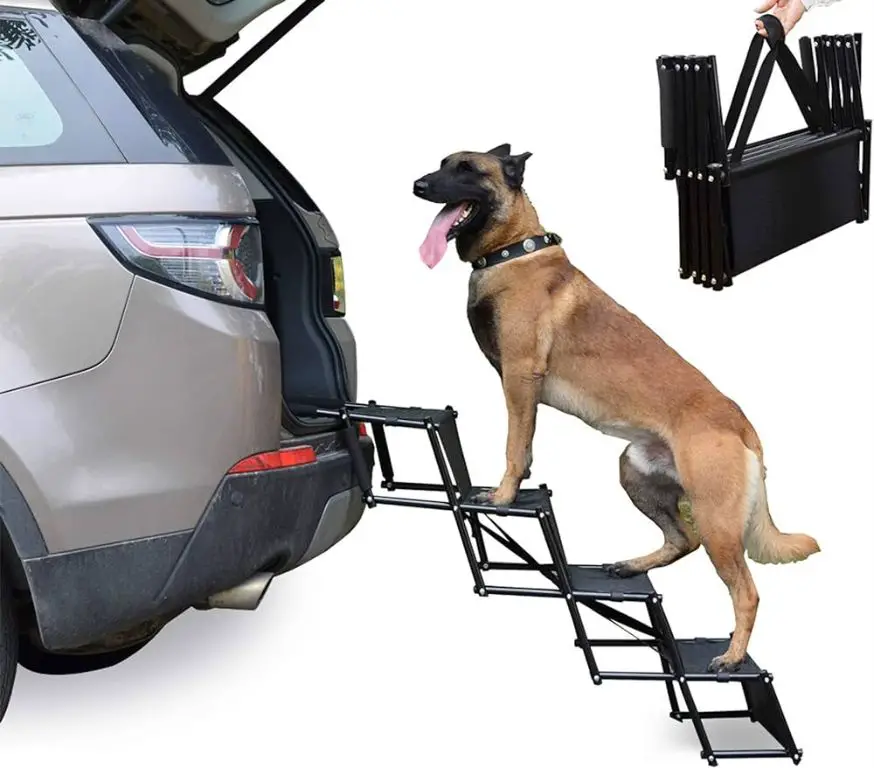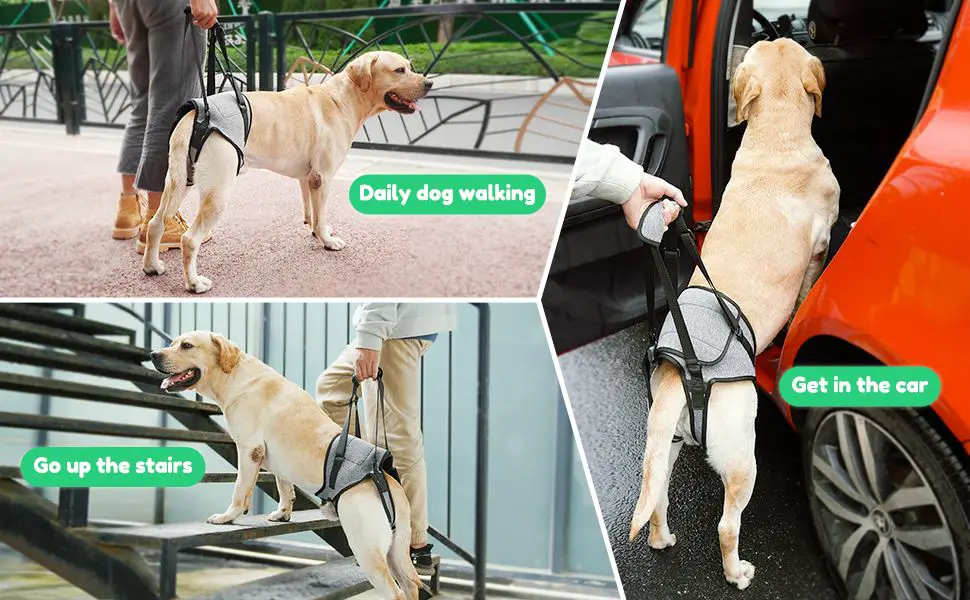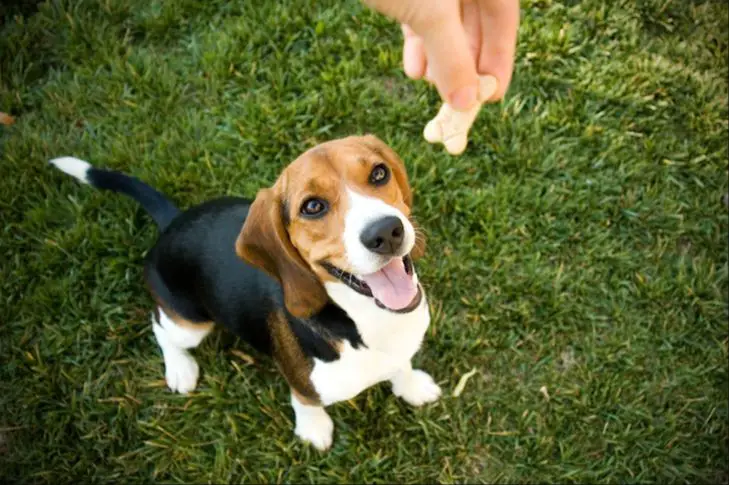Why Get Your Dog in The Car Without Lifting?
Getting your dog in and out of the car without lifting has several benefits for both you and your pup. Lifting heavy dogs into vehicles repeatedly can put strain on your back and lead to painful injuries over time. Other methods allow you to preserve your health by avoiding the risk of muscle, disc, or ligament damage from lifting. It’s simply easier on your body to use ramps, stairs, or assistance rather than bear your dog’s full weight in your arms every car trip.
Your dog’s comfort and safety are also improved when you don’t need to physically lift them. Some dogs dislike being picked up and carried, feeling more secure with their feet on the ground. They may struggle or become anxious when lifted. Other methods allow them to independently enter and exit the vehicle at their own pace. This gives them more autonomy and reduces stress compared to being involuntarily hoisted into the air.
Overall, finding an alternative way to get your dog in the car without lifting heavy weight protects the long-term health of both you and your pet. It prevents injury, creates a calmer experience for your dog, and makes car rides easier on everyone.
Train Your Dog to Use Pet Stairs or Ramps
One of the easiest ways to get your dog in and out of your car without lifting is to train them to use pet stairs or a ramp. Here are some tips on choosing and using pet stairs and ramps:

Types of Pet Stairs and Ramps
Pet stairs and ramps come in a variety of materials, sizes, and designs to suit different needs:
- Plastic, wood, or metal stairs/ramps – These vary in width, incline, and step depth
- Telescoping/folding ramps – Great for storage and portability
- Covered ramps – Provide traction and comfort for paws
- Stairs with railings – Help dogs feel more secure
- Custom-made ramps – For unique cars or accessibility needs
Consider your dog’s size, age, mobility, and your vehicle type when selecting pet stairs or a ramp.
Training Techniques
Use positive reinforcement to train your dog to use pet stairs or a ramp:
- Have tasty treats visible to lure your dog up the ramp
- Verbal praise and treat each step
- Gently guide your dog if needed
- Introduce training in low-distraction areas first
- Be patient and keep sessions positive and short
With regular practice, most dogs will learn to climb pet stairs or a ramp reliably.
Safety Considerations
When using pet stairs or ramps:
- Check stability and grip of the ramp for your dog’s weight
- Use a rug or traction tape to prevent slips
- Ensure no pinch points or openings to get stuck
- Add security attachments to secure ramp to vehicle
- Supervise your dog at first for safety
Properly introduced pet stairs or ramps allow safe and easy car access for dogs of all ages and mobility levels.
Use a Dog Lift or Sling

Dog lifts and slings can be a helpful solution for getting your dog into the car without straining your back or limbs. There are different types of lifts available depending on your dog’s size, mobility, and your budget. Some options include:
Harnesses: Dog lifting harnesses wrap around your dog’s torso to provide secure support. Make sure to get the right size for a proper fit. Place the harness around your dog’s chest and fasten all clips and straps. Use the handle on top to gently lift your dog and guide them into the car.
Slings: Dog slings are similar to harnesses but consist of a single band of fabric that goes under your dog’s belly like a hammock. Slings allow for more maneuverability than harnesses. Slide the sling underneath your dog and grasp both sides to lift their rear and guide them into the car.
Carriers: Sturdy dog carriers with handles can make lifting and carrying easier. Place your dog inside the carrier and use the built-in handle to move them. Hard-sided carriers are best for support and security. Make sure to fasten doors before lifting.
When using a dog lift or sling, be sure to follow proper lifting techniques to avoid injury. Keep your back straight, bend your knees, hold the handle close to your body, and lift with your legs. Avoid twisting or jerking motions. Do not lift a dog that is too heavy for you to handle safely. If your dog is anxious, in pain, or has mobility issues, lifting may not be recommended. Consult your veterinarian if unsure.
Use Treats and Positive Reinforcement
One of the most effective ways to train your dog to get in the car is through the use of treats and positive reinforcement. The key is to reward your dog every time they perform the desired behavior of getting in the car. Here are some tips for using this method:

Use high-value treats that your dog loves. Some good options are small pieces of chicken, cheese, hot dogs, or liver treats. You want the reward to be extra enticing. Regular dog treats may not be special enough for this type of training.
Clearly mark and reward the desired behavior. As soon as your dog places their front paws on the edge of the car or jumps in, say “yes!” and immediately give them a treat. Your timing needs to be precise so they understand what is earning the reward.
Go slow and keep training sessions short. Don’t expect your dog to happily hop in the car after just a few reps. Take things one step at a time over multiple sessions, and keep sessions just 5-10 minutes long to avoid overwhelming your dog.
With consistency, positivity, and enticing treats, your dog will learn that getting in the car results in something very rewarding! This positive association will overcome any reluctance or anxiety they have.
Practice Low Jumps into the Car
Start by practicing low jumps onto surfaces just a few inches off the ground. You can start with a step stool or low platform. The key is to gradually work up the height and distance. Allow your dog to get comfortable with small hops beforeexpecting a full jump into the car.
Always start low jumps on a non-slip surface so your dog can comfortably push off and land without sliding. You may want to practice on grass or use a non-slip mat. Avoid slippery floors, especially when working up to higher heights.
During training, stand near the takeoff point and landing area. Be ready to lift and assist your dog if needed. Provide support until your dog reliably clears the distance. Fully monitor all practice sessions and do not force your dog to jump beyond their abilities. Work up height and distance gradually over multiple sessions until your dog can comfortably jump into the car.
Lift and Place Dog in a Secure Carrier
Using a secure dog carrier is an easy way to get your dog in and out of the car without having to lift them. Look for sturdy plastic or wire carriers designed for car travel that allow your dog to stand up, turn around, and lie down comfortably.
For smaller dogs, choose a carrier that can be buckled into a car seat using a seatbelt or securely placed on the floor. For larger dogs, look for carriers that can be strapped to the backseat or cargo area to keep it stable during transport.
Be sure to familiarize your dog with the carrier beforehand using positive reinforcement training. Feed them treats and praise them for voluntarily entering the carrier at home so they feel comfortable and secure inside.
Once in the carrier, be sure it is properly restrained in the vehicle so it doesn’t slide around. Plastic carriers can be secured with a seatbelt, while wire crates should be strapped tightly to seat anchors or cargo hooks. Avoid placing an unsecured carrier on a seat where it could become a dangerous projectile in an accident.
Remember to take regular breaks to let your dog out of the carrier to stretch, relieve themselves, and get fresh air and water. Dogs should not be crated for more than a few hours at a time. On longer road trips, plan stops every 2-3 hours to ensure your dog stays happy and comfortable while traveling.
Use Car Ramp Attachments
One convenient option for getting your dog in the car without lifting is to install car ramp attachments. These ramps attach to the back of your vehicle and provide a gradual incline for your dog to walk up.

There are several types of car ramps to consider:
- Full platform ramps that are wide enough for your dog to walk up
- Ramps with side rails that provide more stability and grip
- Telescoping ramps that extend and adjust to your vehicle’s height
It’s important to choose a ramp with the right angle – too steep and your dog may hesitate or slip. Look for a gradual 15-20 degree incline for small dogs and a wider 10-15 degree angle for larger breeds.
For convenience, look for folding ramps that can be collapsed for storage and portable ramps that detach for use in multiple vehicles. Measure your trunk dimensions first to ensure the ramp will fit.
Install ramps securely by following the manufacturer’s instructions. Place the ramp firmly on the edge of the bumper or cargo area when in use. With some training and positive rewards, car ramps allow you to avoid lifting your dog and make car rides accessible.
Ask a Friend or Walker for Help
If your dog is too heavy for you to lift into the car alone, asking a friend or family member for help can make the process much easier. Lifting together spreads the weight and reduces strain. Make sure to lift properly as a team by having one person lift from the front while the other lifts from the rear. Bend knees, keep backs straight, and avoid twisting.
You can also look into specialized pet transportation services in your area, sometimes called “pet valets.” These professionals are experienced in safely lifting and securing pets in vehicles. They can ensure a smooth and stress-free experience for you and your dog. Some pet valet services will pick your dog up at home and drive them to destinations like the vet, groomer, or park.
The key is making the experience easy and rewarding for your dog. Pair it with praise, pets, and treats so your dog associates getting in the car with positive feelings. It may take some repetition, but soon they’ll happily hop in knowing fun adventures await.
Consider Your Dog’s Needs
Getting your dog in and out of the car without lifting may not always be possible or advisable depending on your dog’s unique needs. Certain health issues like arthritis, hip dysplasia, or mobility limitations can make jumping and climbing very difficult or painful. For dogs with these conditions, lifting may be unavoidable to prevent injury or discomfort.
Check with your veterinarian if you are unsure about what activities are safe for your dog. They can evaluate your pet and provide exercise restrictions if necessary. Some dogs may benefit from prescription medications or joint supplements to reduce pain and inflammation.
Focus on maintaining your dog’s quality of life and comfort. Adapt your approach based on their health limitations. For example, use pet ramps and lifts whenever possible, but don’t hesitate to lift a senior dog gently into the car to avoid aching joints. Pay attention to signs of difficulty like reluctance to jump, whining, or limping. Prioritize their wellbeing over independence.
While all dogs love riding in cars, safety and proper care should come first. Work closely with your veterinarian to find the right balance between mobility and protecting your dog’s joints. With patience and the right tools, you can make car rides pleasant for even dogs with limited mobility.
Make the Car Fun and Rewarding
One of the best ways to get your dog excited about getting in the car is to make car rides enjoyable. Bring along your dog’s favorite toys and treats to serve as motivation. Offer praise, playtime, and treats after rides so your dog associates the car with positive experiences.
Start with short, fun trips to places your dog loves, like the park or pet store. Bring treats they only get in the car to make it extra special. Go for rides to nowhere just to spend quality time together. The more you make the car a place for adventure and bonding, the more eager your dog will be to hop in.